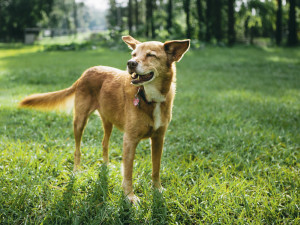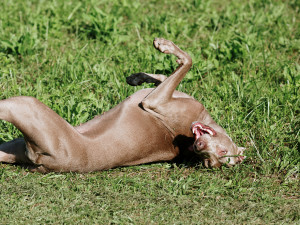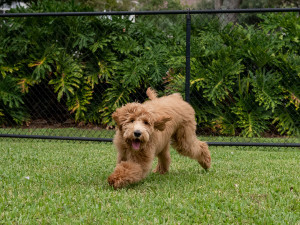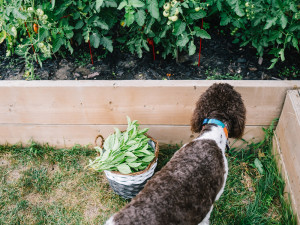Why Do Dogs Eat Grass?
Your pup is literally vegging out — when it’s NBD and when to worry.
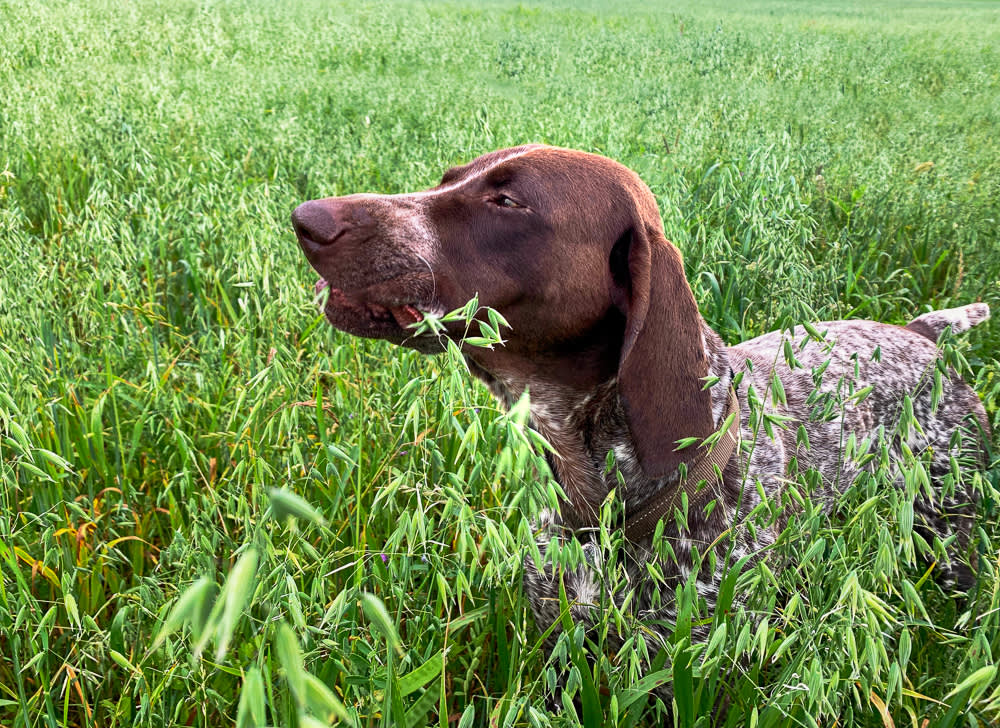
share article

Your pet wants you to read our newsletter. (Then give them a treat.)
What’s the deal with dogs acting like miniature lawn mowers? Munching on grass is pretty common for pups — in fact, more than 67% of people say that their dog eats grass on a weekly basis. The good news is that it’s common, it’s completely natural, and it’s generally considered safe by vets. But have you ever wondered why the heck your dog does it?
Is Eating Grass a Sign of Sickness?
While many pet parents consider illness to be the most likely reason dogs eat grass, studiesopens in a new tab don’t necessarily support this theory. In one study, only 8% of the respondents reported seeing signs of illness before their dog ate grass, and of that group, only 22% reported that their dog vomited after doing so.
In another studyopens in a new tab, researchers who compared the grass-eating behaviors of dogs with mild gastrointestinal disturbances to those without concluded that a healthy dog was more likely to eat grass than one with an upset stomach. Still, dogs do sometimes display anxious behaviors prior to eating grass, seeming to seek out longer grasses and eating them quickly, which stimulates the vomiting reflex.
Or, Is Eating Grass Normal Dog Behavior?
It’s possible that dogs eat grass to pass the time or to aid in digestion, or because — here’s a shocker — the grass tastes good. It’s likely that eating grass is a natural behavior for dogs, one passed down from their wild ancestors, wolves. Grass may even provide dogs with a source of fiber. Speaking of fiber, it may be time to consider adding vegetablesopens in a new tab or high-quality sources of fiberopens in a new tab to your dog’s diet.
How to Keep Your Grass Dog-Friendly
Create a dog-safe space.
Don’t use pesticidesopens in a new tab that contain toxic chemicals, or consider making a special dog-safe spaceopens in a new tab in your yard.
Clean up poop.
Reduce the risk of parasite transmission by making sure that your dog only eats grass in your own backyard. Dispose of dog poop regularly, and consider making a pet-waste digesteropens in a new tab.
Keep an eye out for mean seeds.
Foxtailsopens in a new tab — small, dry seeds produced by invasive, grass-type weeds — are prevalent in many lawns and pose a serious risk to dogs. If you have foxtails in your yard, be diligent about removing them (dig or pull them up, or soak them with vinegar at ground level), and watch your dog closely when in the yard.
Beware of rough grasses.
One caveat when it comes to grass consumption: Long, rigid grasses with sharp edges have been known to cause throat abrasions. The esophagus is sensitive and in some cases, dogs who eat this type of grass can experience a serious medical issue. If your dog is coughingopens in a new tab or showing signs of irritation after eating grass, it’s best to contact your veterinarian immediately.
And, as always, if you have any concerns whatsoever, especially if your dog’s grass-eating seems excessive, persists for long periods of time, or if they aren’t eating normally, it’s best to have them assessed by your veterinarian.

Daniela Lopez
Daniela Lopez is a digital media specialist and long-time contributor to The Bark.
Related articles
![Cute weimaraner dog lying on lawn and scratching its back]() opens in a new tab
opens in a new tab5 of the Best Ways to Solve Your Dog’s Allergies
Here’s what works (and what doesn’t).
![Dog sitting on a couch in a living room with plants]() opens in a new tab
opens in a new tab5 Plants That Are Toxic to Your Dog
Thriving plants are spring’s whole thing—but these offenders can be perilous to pets.
![goldendoodle puppy playing in grass in yard]() opens in a new tab
opens in a new tabThe Dirt on Dog-Proofing Your Yard
10 steps to a safe outdoor space. Landscaper not required.
![Dog near a vegetable garden next to a basket full of a harvest]() opens in a new tab
opens in a new tabTips on Dog-Safe Gardening
Garden organically, for the sake of both the planet and your dogs.
